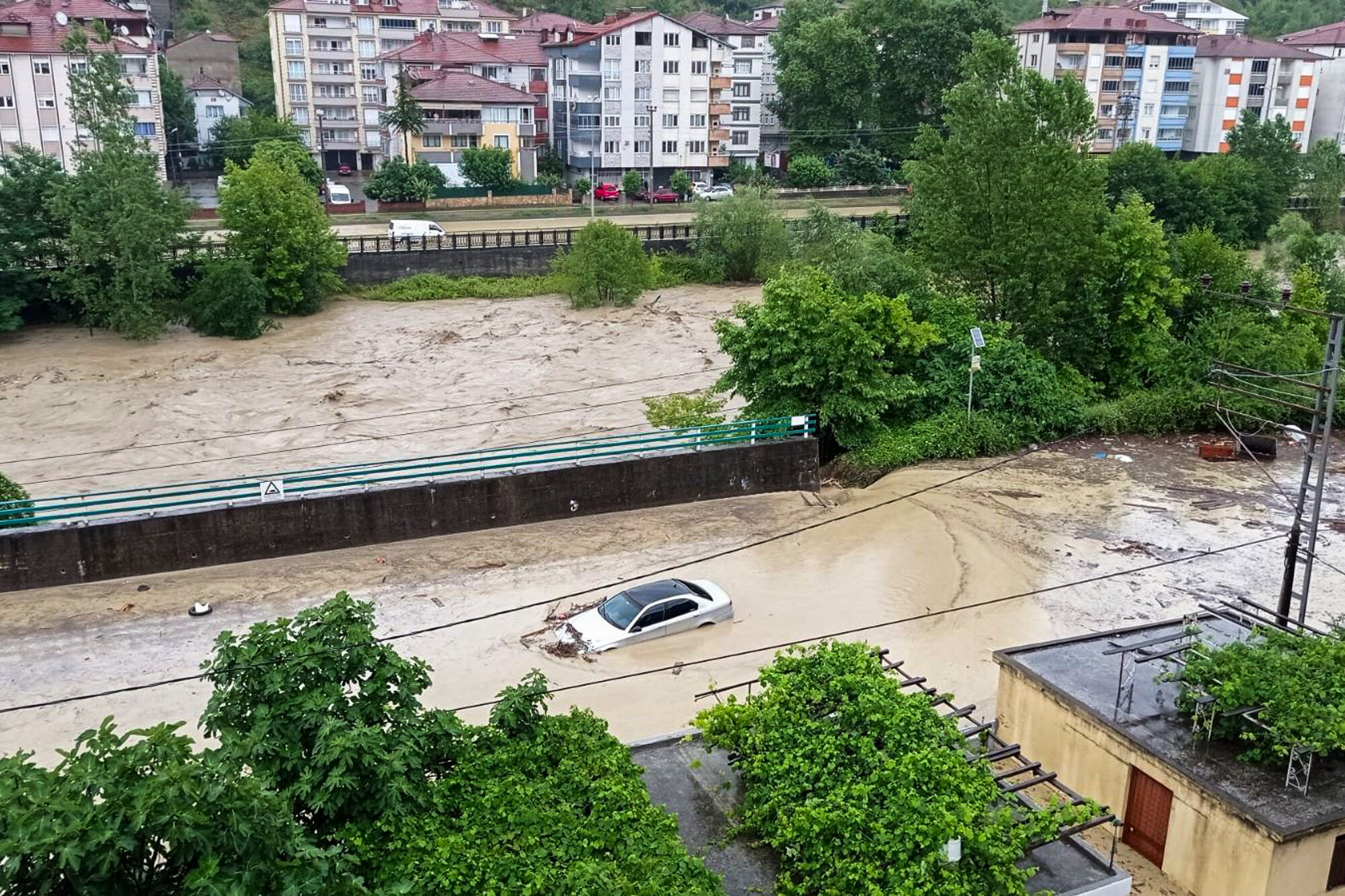A partially submerged car is visible in floodwaters after heavy rains in Zonguldak, Turkey, July 10, 2023. Scientists say increasingly frequent and intense storms could unleash more rainfall in the future as the atmosphere warms and holds more moisture.
Extreme rainfall accompanied by deadly flooding occurred in the United States and several other countries over the weekend and last week. Central and southern regions of South Korea experienced several dozen fatalities, including the Chongju region where motorists became trapped and drowned in their submerged vehicles. Flooding in Upper Makefield Township, Pennsylvania claimed five lives, with a search currently ongoing for two missing children. Other affected areas included parts of New Hampshire, Massachusetts, Connecticut, New York, and New Jersey, where a state of emergency was declared by Gov. Phil Murphy due to significant damage from flooding and landslides. These events follow relentless flooding in India, Japan, China, Turkey, and the U.S.
Atmospheric scientists note that while these destructive floods are happening in different parts of the world, they all share a common factor: the formation of storms in a warmer atmosphere, leading to more frequent extreme rainfall. The predicted further warming will exacerbate the situation, as a warmer atmosphere can hold more moisture, resulting in more precipitation and potentially deadly outcomes. The heating of the atmosphere is attributed to pollutants like carbon dioxide and methane, as they prevent heat from radiating into space.
While climate change is not directly causing the storms that unleash heavy rainfall, they are occurring within a warming and wetter atmosphere. Meteorologist Rodney Wynn explains that warmer air has a greater capacity to hold moisture compared to cooler air. With every 1 degree Celsius increase in global temperature, the atmosphere can hold approximately 7% more moisture. The average global temperature has already risen by at least 1.1 degrees Celsius since 1880. As a result, storms are forming in environments with more moisture and leading to increased rainfall.
Regions hit hardest by climate change do not necessarily contribute the most to planet-warming pollutants. The impacts of climate change are often felt in areas with inadequate infrastructure, less preparedness for extreme weather events, and limited resources to manage the consequences.
Recent flooding in various countries, including India, Japan, and certain regions of the United States, has caused significant damage and loss of life. Schools in New Delhi were forced to close due to heavy monsoon rains, resulting in landslides and flash floods. The Beas River in India overflowed, causing flooding in nearby neighborhoods. In Japan, torrential rain led to floods and mudslides that claimed two lives and left several others missing. Some areas in the United States, including Ulster County in New York and Vermont, experienced the worst flooding since the devastation caused by Hurricane Irene in 2011.

